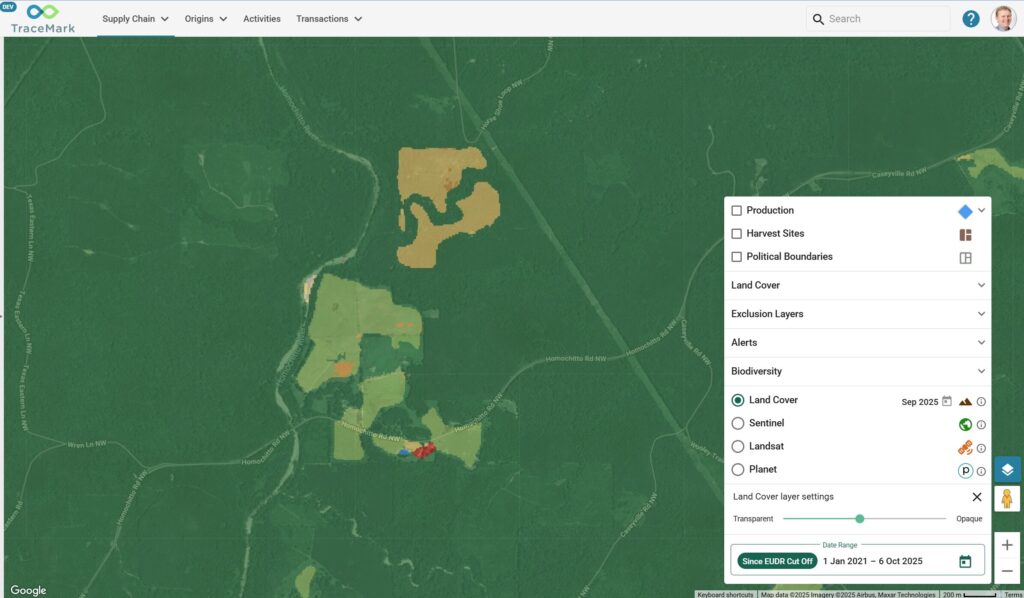What’s influencing the spatial industry in 2021?

The spatial industry is relying on, investing in and processing more data than ever before. Businesses are finding new ways to realise the potential of spatial data they’ve collected for years and how they can process this information in new ways to drive their decisions.
Last year, we saw organisations adapt to remote working, invest in their spatial technology to manage assets remotely, plan projects using digital twin capabilities and adopt a digital first approach. But what can we expect from 2021? Here are my predictions.
Realising the potential of Earth Observation technology
Earth Observation (EO) data, (the actor formerly known as remote sensing data) has been promising much since the 1970s. For decades, it has struggled to deliver the promise of automatically monitoring the world from space.
Its potential is only being realised now as the amount and variety of data increases along with its relevance and acceptance by more people. There are four favourable forces that have come together to make this happen:
- Prevalence of satellite imagery: Thanks to Google Maps and Google Earth, people are more used to seeing satellite imagery and are starting to ponder “if only I had access to more current, better and higher resolution imagery”.
- Timely and higher resolution imagery is available: There are now a multitude of satellites of different shapes and qualities capturing raw EO data for any number of applications.
- Computing power: People have the ability to crunch and scale quickly without the limitations of on-premise storage systems.
- Increase in the number of Artificial Intelligence (AI) and Data Science Specialists: At the end of the day, EO data consists of numbers, trends and patterns. AI and Data Science Specialists are the ones that train computers to relate these patterns and trends to real world environments and events. If there are more AI and Data Science Specialists, there is increased capacity to solve more problems.
In the next 10 years, we’ll see an explosion in the use of EO for all manner of applications. With more people using it, the total cost of ownership (and price) for each user will come down, thus helping with the economics and broadening out of use cases.
The momentum of three dimensional (3D) use cases
Three-dimensional (3D) data is being captured everywhere – it’s coming from planes, mobile laser scanners and even some smart phones. Computing power is finally catching up to handle the huge amounts of data being captured.
The pandemic has meant that the need for remote management and inspection of assets via digital twins has become even more critical to our businesses. However, this data is still really only available to those who are specialised in or working in specific technical roles and with very technical software.
How do the masses get access to this data? That opportunity still exists. In the 2000’s, Google digitised and changed how the general public accessed two-dimensional (2D) maps through Google Maps and Google Earth. In the last decade, Nearmap changed how people accessed 2D and 2.5D (oblique) imagery and made it ubiquitous available. The technology for both of these came from Australia – can Australia do it again with 3D?
It’ll be interesting to see who comes up with the technology to make 3D more accessible and relevant in our everyday lives.
Bringing GIS back to its roots
Whilst our industry loves the challenge of solving very complex technical challenges, the vast majority of businesses and communities still do not have or use the most basic forms of spatial information or technology. As an industry that’s evolving rapidly, our challenge is to ensure we continue to help to build capacity to empower people to manage and maintain their own spatial information.
In most cases, the largest return on investment for organisations with little to no spatial capability is being able to see their data visually on a map. This may challenge many parts of our industry who have moved on from this and assumed data exists purely to gain insights and do advanced analysis. This is not where the value lies.
Visualising country in 3D is one way we can help non-spatial people understand the value of spatial information. Indigenous Elders have captured cultural and spatial knowledge for thousands of years and Indigenous-owned spatial consultancy, Winyama is seeing the role of 3D in capturing culturally relevant information in a digital format to pass down to future generations. Read Winyama’s blog to see how they’re using 3D imagery to capture Elder’s knowledge of country.
What’s next?
The NGIS Group is always finding ways to leverage innovative, new spatial technology to make a positive impact in the world, whether it’s through our partnerships, projects or initiatives. Learn more about our impact here.
Related Articles
Here are more related articles you may be interested in.







